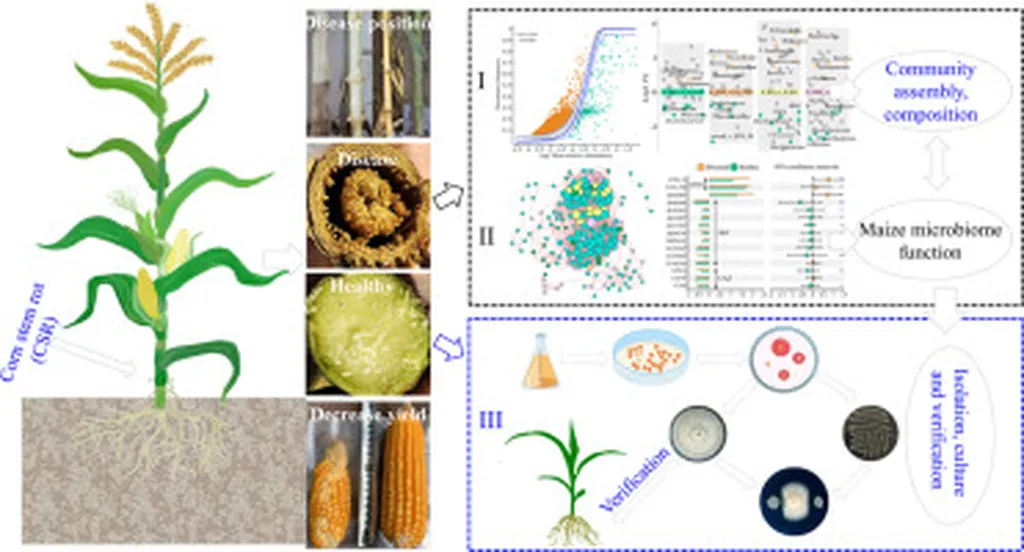In the heart of Xinjiang, China, a groundbreaking study is unraveling the intricate dance between maize and its microbiome, offering new insights into combating corn stem rot (CSR), a disease that has long plagued farmers worldwide. The research, led by Xinhua Ding of the Key Laboratory of Integrated Pest Management on Crops in Northwestern Oasis, sheds light on how CSR pathogen invasion alters the ecological processes governing the microbiome and its functions in different plant compartments.
Maize, a staple crop, faces significant threats from CSR, which can lead to substantial yield losses. The study, published in the journal ‘Plant Stress’, employed amplicon and metagenomic sequencing to investigate microbial communities across nine maize compartments following CSR infection. The findings reveal that CSR has a more pronounced impact on bacterial communities in the soil and fungal communities in the bottom stem compartments than on microbial communities in other compartments.
“Fungal community was more sensitive to CSR than bacterial community,” Ding explains. This sensitivity is crucial as it highlights the potential for targeted interventions to bolster plant defenses. The study also found that CSR destabilized the complexity and stability of the maize bacterial network but increased the ecological importance of fungal taxa in the microbiome.
One of the most promising findings is the enrichment of potentially beneficial bacteria in both below- and above-ground compartments of diseased maize. These bacteria, including Bacillus, Kosakonia, Paenibacillus, and Sphingomonas, exhibit strong antagonistic activity against pathogens, highlighting their role in CSR resistance. This discovery opens new avenues for developing bio-based solutions that can enhance maize’s natural defenses against CSR.
Metagenomic data profiling further indicated that specific functional traits, such as detoxification capacity, biofilm formation, and plant-microbiome signaling pathways, were significantly enriched in diseased maize. These traits are essential for improving plant health and resilience, offering a glimpse into the future of sustainable agriculture.
The commercial implications of this research are substantial. By understanding how CSR alters the maize microbiome, farmers and agronomists can develop more effective strategies for disease management. This could lead to reduced reliance on chemical pesticides, lower production costs, and increased yields, ultimately benefiting both farmers and consumers.
As we look to the future, this research paves the way for innovative approaches in plant protection. The use of beneficial microbes to enhance disease resistance is a promising avenue that aligns with the growing demand for sustainable and eco-friendly agricultural practices. By harnessing the power of the microbiome, we can create a more resilient and productive agricultural system.
In the words of Ding, “This study enhances our understanding of plant-microbiome interactions and provides theoretical support for the use of plant-associated microbes in sustainable agriculture.” As we continue to explore these interactions, we unlock new possibilities for a healthier, more productive future for maize and other crops.

